The Friday fold is an overturned antiform that’s associated with a fault. It occurs in limestone and shale on the flanks of the mountain called Cristo Rey, near the spot where Texas meets New Mexico and Chihuahua, Mexico. Here’s Joshua Villalobos of El Paso Community College, standing next to the fold & fault:
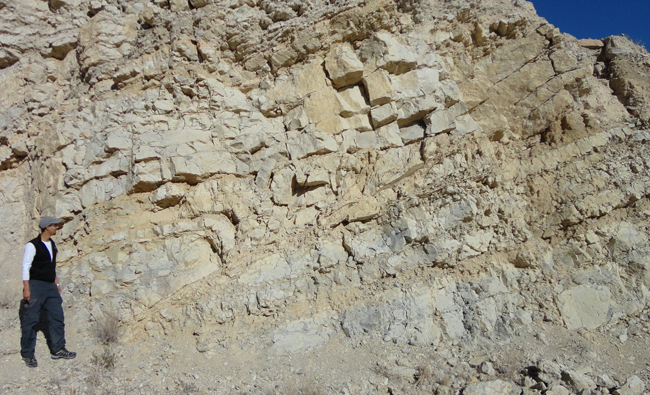
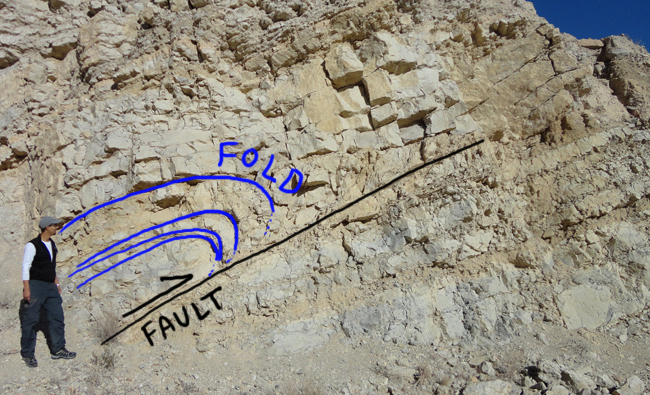
This deformation is associated with the intrusion of a laccolith of andesitic magma 49 million years ago, and the sloughing off of the (formerly overlying) sedimentary layers in all directions. As the magma rose to the south, strata went tumbling down to the north, and pushed these Cretaceous layers out of their way.
Zooming in on the fold and fault:
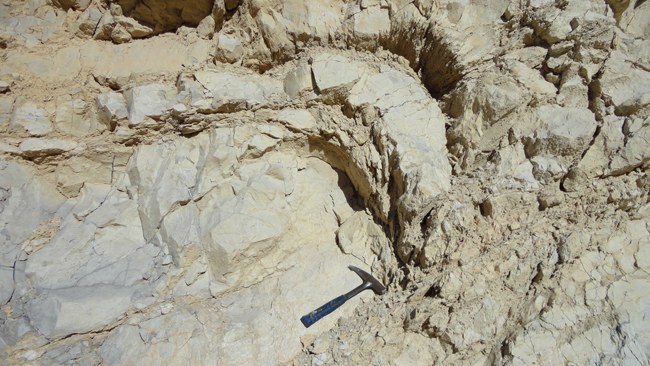
Let me rotate that a bit, so the fault is parallel with the bottom of the photo, and back out a bit, and you’ll take note of something else that caught my eye:
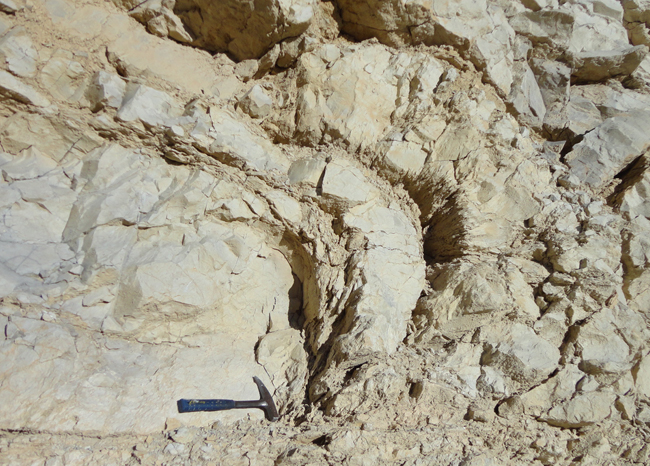
There’s a neat cleavage fan splaying out from the fold hinge area. This cleavage appears to be better developed in the weaker, more friable shale layer, and then to grade out into the more massive limestone which makes up the upper portion of that bed:
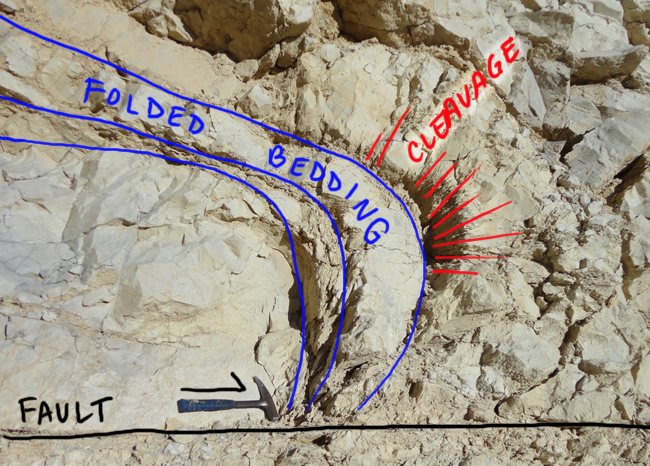
I like how the hammer imitates the fault motion arrow.
Happy Friday!

I look forward to the Friday fold – really puts my passion for geology in the right perspective! A really cool example of competence contrast! We have been looking at sheath folds for our ‘Friday fold’ theme at Plymouth University, England.
Thank you!
Great picture, Callan. How do you know this isn’t a drag fold where the folding occurred at the same time as faulting (not prior to faulting as in a fault-propagation fold)?
I guess it could be either, although I’m clearly not parsing the processes as precisely as I ought to. I guess I’m going for them being synchronous in the tectonic sense, not necessarily making a statement about X occurring earlier relative to Y. Anyhow, I didn’t see any evidence of ramp-&-flat geometry there, but I only visited for 20 minutes…